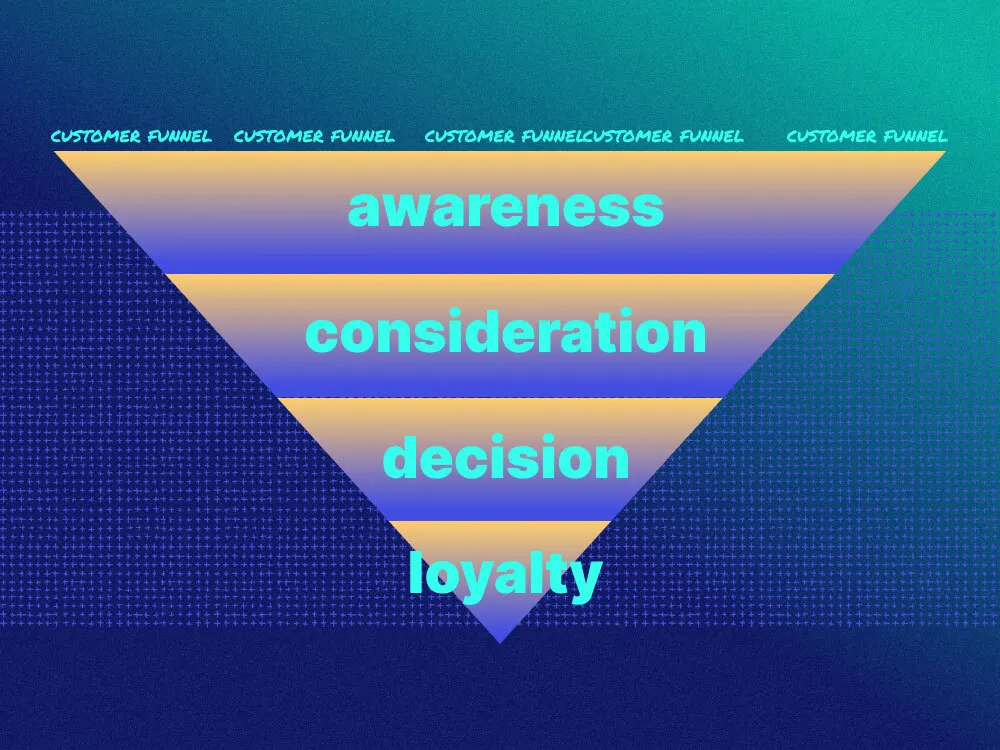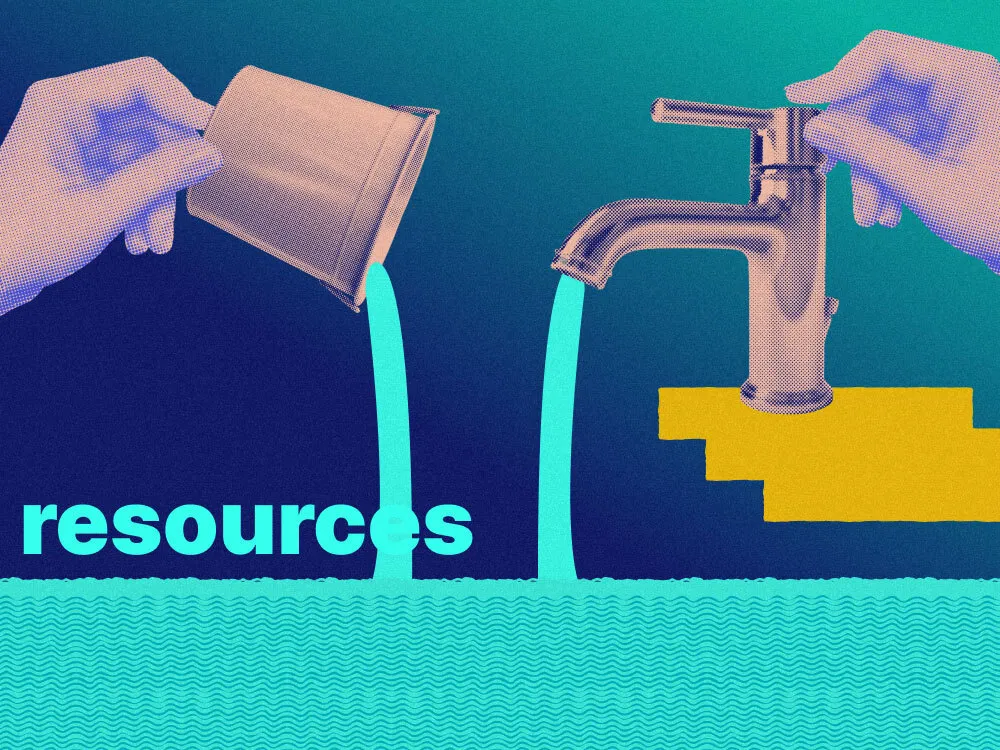Aligning your partnership marketing strategy with your customer funnel can significantly enhance your marketing efforts. By targeting customers at every stage of their journey, you can increase engagement and drive conversions, taking your promotional efforts to the next level – it’s just about taking a data-backed approach.
To explore how to develop aligned marketing strategies at each stage of the funnel, we spoke with Matthew Sison, the senior growth manager at Looka, an online logo maker and branding platform for entrepreneurs and small business owners.
Understanding the customer funnel
The customer funnel can be broken down into four main stages:
- Awareness begins when a user realizes that they have a problem.
- Consideration is when a customer researches to find a solution by conducting market research and weighing several options or products to decide what might be the best fit.
- Decision involves the customer selecting a solution.
- Loyalty has the goal of customer retention.
Each stage requires unique messaging strategies tailored to where the potential customer is in the process.
“We just want to be there for each stage of our customer’s funnel and have the right message be shown to them, so that whenever they're ready to finally get to the decision phase, we’re there,” Sison says.

Learn more: Critical points of trust within your ecosystem.
Tailoring strategies for each stage
Let’s explore some effective partnership marketing strategies tailored to different stages of the funnel.
Awareness stage
Successful partnership marketing strategies at the awareness stage increase brand visibility and attract new leads.
One effective example of a partner marketing strategy at this stage is co-hosting webinars or events with complementary businesses in your industry. By combining expertise and resources, these joint ventures not only introduce your brand to new audiences but also position you as a credible authority in your field.
Cross-promotion on social media platforms presents another avenue for widening your reach. By strategically partnering with complementary brands or influencers, you can leverage each other’s follower bases to engage with a larger audience and spark interest in your offerings.
Additionally, tapping into a partner brand’s email list allows for targeted outreach to potential customers who may have similar interests or needs. By aligning messaging and value propositions, you can effectively capture the attention of these prospects and drive them towards further engagement with your brand.
These collaborative efforts not only amplify your brand’s visibility but also foster meaningful connections with prospective customers, laying a solid foundation for future engagement and conversion.
See more: Everything you need to know about outbound partner recruitment.
Consideration stage
At the consideration stage, partner marketing strategies should leverage your partners’ credibility to educate and engage potential customers.
The consideration stage is one of particular importance to Looka since the space is highly competitive. Potential customers have a myriad of options for designing a logo — using Photoshop or Illustrator, outsourcing to a graphic design agency, or using a logo generator like Looka, to name a few.

Sison has found success building brand awareness in the consideration stage by securing placement on “top ten” or “best of” lists online. These resources are often used by potential customers as they conduct market research. An endorsement from a credible website can be an important step in closing a deal.
To get the brand placed on these lists, Sison typically reaches out to the website to introduce the product. If they decide to feature it, he will offer them an affiliate link. The affiliate program provides those websites with a kickback for anyone they refer to the Looka, using PartnerStack for its affiliate tracking software.
“We work with a lot of those partners to make sure that every single one of those, as best as we can, is compensated for their traffic with an affiliate link from PartnerStack,” Sison says.
Related: How to build an affiliate partner program with integrity.
Decision stage
At the decision stage, partner endorsements and co-branded offers can be instrumental in moving a deal over the finish line. Learn four ways that partnerships help close deals faster for more info on that.
Partner endorsements, such as testimonials or case studies featuring satisfied customers, can be a highly effective partnership marketing strategy because they lend credibility to your brand, which may help alleviate a customer’s lingering doubts.
Additionally, co-branded offers, which involve teaming up with another brand to provide exclusive deals or bundles, can sweeten the deal and incentivize prospects to take the plunge. For example, partnering with a complementary service provider to offer a discounted package deal or bundling your product with a related SaaS product can create added value for customers. By strategically leveraging these partnership marketing tactics, businesses can effectively tip the scales in their favor.
Loyalty stage
Collaborating on loyalty programs and exclusive offers can help retain customers and encourage repeat business, especially when a product is based on a recurring subscription.
Looka leans into its affiliate program to incentivize loyalty. To encourage customers to become advocates for the product, Looka offers individual users affiliate links from which they can earn commission. Put simply, individuals become the partners here.
“Once they become an advocate of Looka, they essentially become a fan,” Sison says. “That is when we encourage them to sign up and become an affiliate. This sort of restarts that process for the next set of users.”
See more: How to win more customers through referrals in 2024.
Selecting the right partners
When selecting a brand for a partner marketing campaign, it’s important to ensure that it aligns with your target audience. Perhaps this seems obvious, but businesses must choose partners whose audience matches their desired customer profile. This alignment ensures that the partnership will resonate with the right people, maximizing the effectiveness of collaborative efforts and minimizing wasted resources.
Additionally, choose a partner brand who brings valuable skills or assets to enhance your potential customer’s journey. Whether it's expertise in a particular industry niche, access to unique distribution channels, or a strong social media presence, partnering with businesses that complement your strengths can enrich the customer experience and drive better results.
Furthermore, consider the reputation of potential partners, as their image reflects upon your brand. You can leverage partners with a positive reputation and strong brand identity, to bolster your brand’s credibility in the eyes of prospective customers.
“When it comes to joint marketing efforts, it’s just about understanding that there's a fit and there’s a synergy between the audiences without necessarily being competitive,” Sison says.
Building effective partner marketing campaigns
When it comes to building effective partner marketing campaigns, there are a few key strategies to consider. First, joint promotional efforts, which involve coordinating marketing efforts that resonate across partner audiences. This might entail co-branded advertising campaigns or joint email marketing initiatives. By aligning messaging and promotional activities, partners can leverage each other's strengths and amplify their reach to attract more potential customers.

Shared content creation is another powerful tactic in partner marketing. By pooling resources and expertise, partners can create comprehensive content to engage prospects, like educational guides, case studies, and whitepapers. This collaborative approach positions partners as trusted advisors and industry thought leaders while dividing the labor and costs required to create high quality content.
It’s worth revisiting cross-promotion on social media, since it is such a powerful strategy to maximize reach and engagement. Partners can leverage their combined audiences and increase brand visibility through content sharing, tagging and joint campaigns.
Read more: How co-marketing campaigns can build trust and win you more deals.
Measuring success across the funnel
It’s important to continuously fine-tune your partner marketing strategy based on data as well as partner and customer feedback. Measuring your key performance indicators (KPIs) can keep your business on track to hit your targets.
Sison constantly checks in on his partners. Is there a partner brand that’s consistently driving traffic but not converting well? A website that’s incentivizing users to make accounts but not closing sales? A partner that’s not driving much traffic at all?
If he encounters any of these scenarios, he tries to see if he can work out the kinks. This could mean adjusting the messaging, offering to increase a partner’s commission structure to encourage more referrals, or admitting that it’s maybe not the right fit.
In the competitive realm of advertising, cutting through the noise takes work. “As a brand,” Sison says, “you want to find a way to be able to stand out and have consumers still be able to trust you, so that you're not just some random email in their inbox.”


















